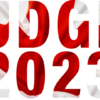I was having a conversation with a prospective client the other day and among other things, the subject of a RESP for his one-year-old son came up. I was shocked when he said, “Joey, my investment guy said that it is better to save for education in a TFSA because you have more control of how the funds are used, just in case my son does not pursue post-secondary education.” I thought, wow, I must investigate this a little further and see exactly what percentage of high school graduates do pursue post-secondary education. According to Census Canada:
- 66% of high school graduates go to university with an average cost between $48k – $96k for a four-year degree program
- 25% have a diploma or certificate from a program two years or less costing between $13k – $20k
According to this census, roughly about 10% of high school graduates don’t pursue post-secondary education, so the chance that your child will fall in this statistic is very low. Do you want to take this risk? As you can see, about 90% of high school graduates will pursue some form of education or training but the cost is challenging and may even deter some from valuable post-secondary education. Students will need family help so that they do not incur extra debt. So, once you have decided to help save for your child’s post-secondary education, what are your options?
Comparing TFSA’s and RESP’s
TFSA – Anyone 18 years of age or older, with a SIN number and who is a resident of Canada can open a TFSA with an annual limit of $6500 for 2023 or a total deposit of $88,000 to date. Here are the characteristics of a TFSA:
- After-tax money goes in
- Growth on this money is tax free
- Any money withdrawn is tax free
- Withdrawals can be put back into the TFSA after January 1 of the following year. The only variable is the return on your investment and you do not want to take any excessive risks, especially in the years leading up to post-secondary education needs.
If your child decides not to pursue post-secondary education, nothing is lost, you can use the money invested in the TFSA any way you see fit.
RESP – There is a contributor (person making the deposits) and a beneficiary (student). The maximum lifetime amount you can deposit for any beneficiary is $50k. The two key features of a RESP are:
Government grants and incentive programs
- Basic Grant: The government will match 20% of your deposit to a maximum of $500/year or a lifetime maximum of $7200.
- Provincial Education Grants:
- BC Education Grant: Residents of BC can apply for a one-time education grant of $1200 for their child between the age your child turns 6 until they turn 9.
- Saskatchewan Advantage Grant: Provides a 10% match/year to a maximum of $250 for residents of Saskatchewan.
- Additional Grants: There are other incentives for low to middle income families.
- An extra 10% – 20% on the first $500 of contributions depending on the parents annual combined income.
The money inside the plan grows tax sheltered
- Original contributions come out tax free
- Grant and growth income is taxed to the student
- Most students’ income is so low there are no tax implications at withdrawal.
If you think about it, with a RESP you are getting a minimum 20% return on your money immediately with no risk right away. To match this return, your TFSA would have to generate a return of 6% per year for 3 years! The only other variable is the rate of return on this money, just like a TSFA.



